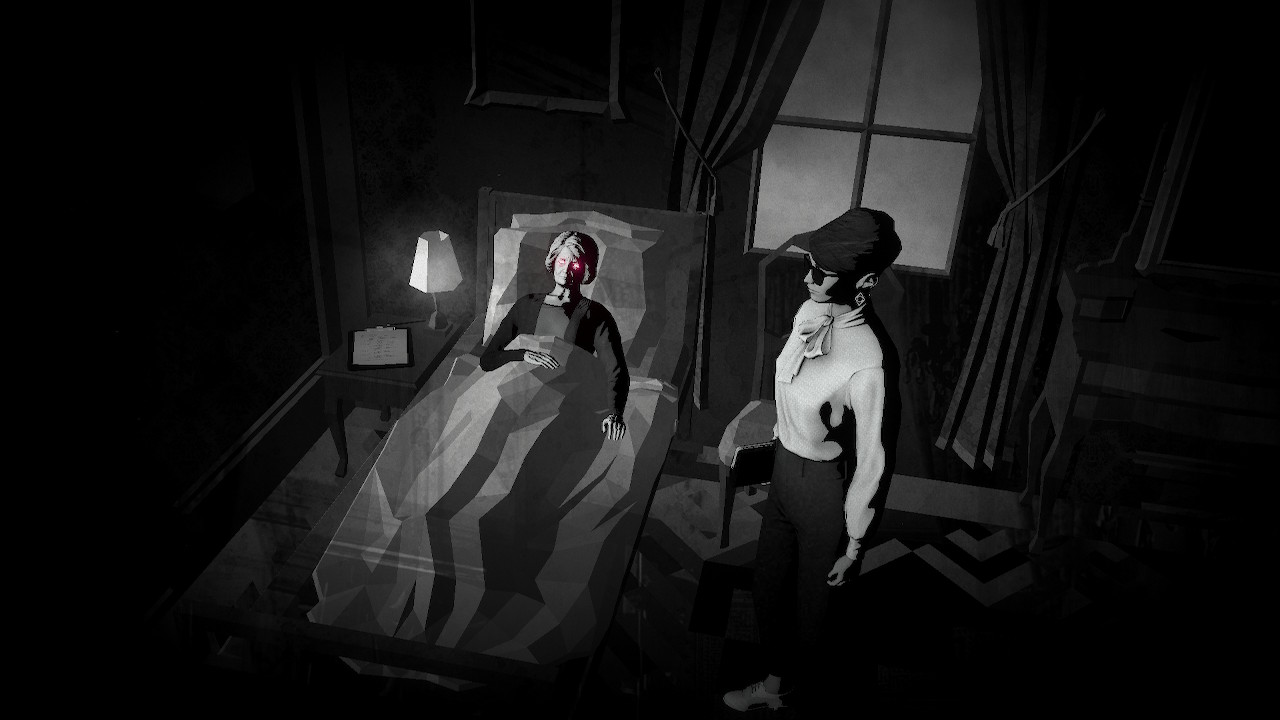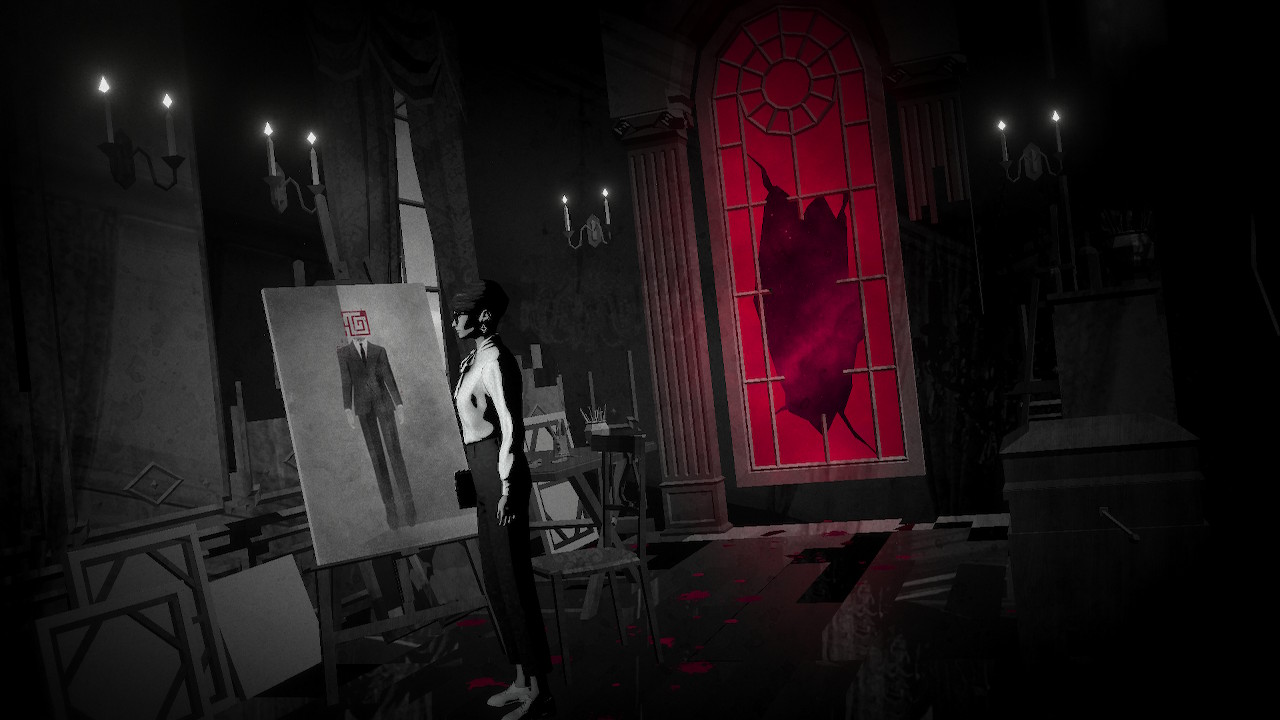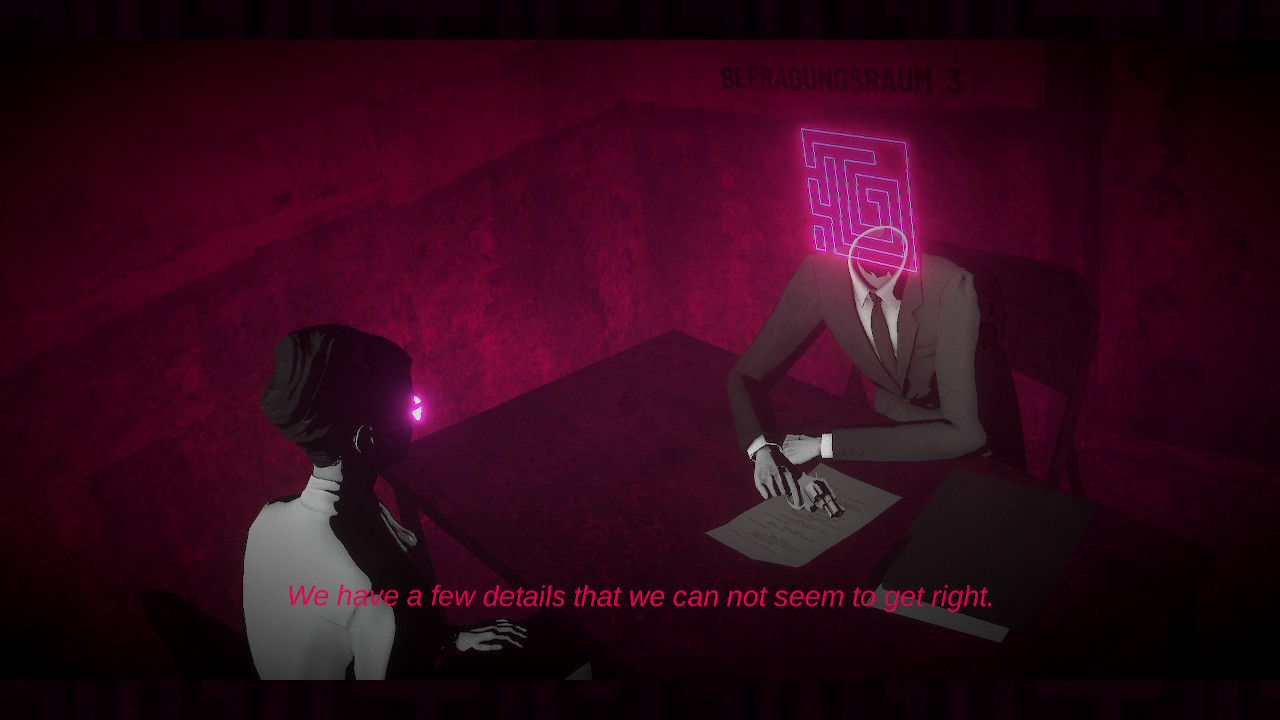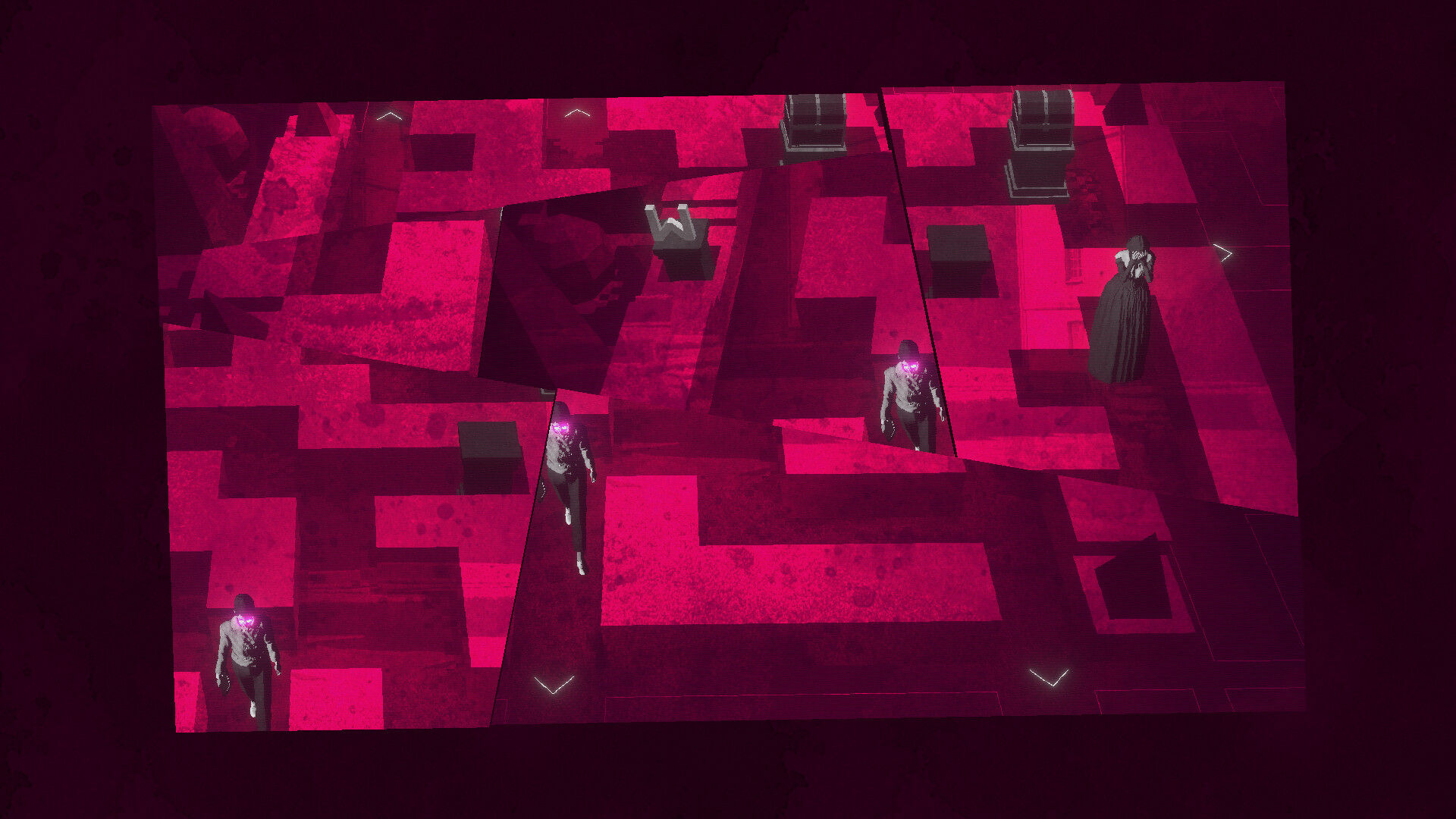It’s not often that puzzle games expect you to answer questions with a gun to your head, but Lorelei and the Laser Eyes has little time for compromise. Pay attention and use your brain, or you might lose it at the wrong end of a revolver slug. If that sounds a bit severe, be assured it’s only an occasional occurrence in the latest release from Swedish studio Simogo, but there is a hard edge to the game’s demands throughout, coupled with an extraordinary breadth of solutions that ensures you can’t settle into a cosy groove. And that, ultimately, is what makes Lorelei and the Laser Eyes a masterpiece.
If you come for the brainteasers, rest easy, as this is a puzzle box of grand and devious proportions. Yet it also strikes a tone that wrongfoots you from the start and keeps shaking you off balance until its finale, even once you’ve accumulated a fairly solid grasp of what’s going on. Playing as a young woman arriving at an old hotel at the postal behest of some mysterious man, the first thing you might find is the game’s instruction manual in the glove compartment of your car. While you thus gain insight into the rules governing your progress, the rules of the fiction and its link to reality are already blurred.
From there, you may note similarities to other series as you enter and explore the hotel – cell-shaded characters reminiscent of Grasshopper’s Killer 7 and No More Heroes, the fixed camera angles of old Resident Evil games. Locks asking to be wedded to special keys and doors bolted from the other side also call back to Capcom’s classic, yet any sense of firm ground here is only summoned for the purpose of subsequent subversion. You soon notice something uncanny in the surfaces of mundane mansion furniture, for instance, as if they’re mirroring some alternate reality. And while it’s a relief to find no zombies in the building, as puzzles lead to more puzzles your mind slides into an expanding spiral that threatens never to expire.
Everything in Lorelei is a puzzle. Once you circle round to the business end of one of those bolted doors, for example, be prepared to leaf through a book of mathematical conundrums to crack the code that unshackles the sliding bar. Maps, meanwhile, are tucked away in cases guarded by combination locks, and you won’t simply discover those keys you need lying loose in a drawer. There’s always a process to manoeuvre through, involving observation, research into the myriad documents you gather, or items you’ve yet to add to your clutch bag inventory.
All these puzzles feel doubly inspired thanks to the way solutions often intertwine with the story and its themes, in your attempts to unveil some long-forgotten ‘truth’. Certain names and dates crop up repeatedly as motifs, but coded and arranged in a hundred different ways, numbers broken down into constituent parts perhaps, or helpfully underlined in old letters, with a little calculation or rotation required to transform them into the next password or padlock combination.
The real pinnacles of Lorelei’s design, though, emerge in the overlaps it constructs between fact, fiction and another layer of fiction within, and most of all in the game’s fixation on the world of art. In time, you step into exhibitions and installations that are fascinating as cultural works as well as holders of secrets. While all puzzles in Lorelei are superbly logical in their own perverse way, then, here they become something more – considerations of perspective, reflections on the roles of creator and audience. These concerns spread to the digital too, with mini-games to test and pick apart as well as play. Like the instruction manual in the car, Lorelei’s external existence folds into the fabric of its world.
As for the story, it is a tale of artists, which you may well surmise from the moment you meet your avatar. Hair in a tight beehive, large sunglasses, a bow erupting from her silk blouse, she walks with stiff dignity, half-fashion, half-business. The mystery man you’ll learn is an auteur writer and director, and over several encounters framed by his artful eye, along with letters, biographies and more surreal forms of communication, Lorelei chews on the magic in art, and the money, and the madness. It’s weird and creepy yet immensely rewarding as revelations feed into solutions and vice versa, like a giant escape room directed by Bergman or Fellini.
If anything, the puzzles are so numerous and diverse and the presentation so multi-faceted (even a little nauseating in one sequence), the experience can be overwhelming. While you will eventually have to solve most of its puzzle strings to reach the end, it’s amazing to realise how open the game’s structure is, allowing different players to complete tasks in very different orders. Yet the downside of having so many directions to go at once is that you can’t be sure what deserves attention now and what must be solved later, and even as the game keeps track of the things you have left to do, it’s easy to forget something important if it’s not linked to the hotel’s most frequently travelled corridors.
And then there’s that hard edge. Simogo’s commitment to a one-button control system to interact with objects of interest and menus alike never fully justifies itself, as you fiddle up and down through your ream of collected documents to open a map, then navigate over to an exit command rather than simply click a cancel button to jump back to the game. The absence of any kind of hint system can be bruising too, especially since you may miss the occasional useful object or doorway amidst the monochrome, or when the logic just won’t click on a puzzle that’s barring you from a host of fresh leads.
Having said that, though, there’s reason to believe these quirks are essential to the package. With its exploration of auteurism comes a sense that Simogo is aping the genius creator’s flawed demand for perfection, for the idea that must not be tampered with, even if that means parts of its audience will butt against it. Art in this view is as tyrannical as it is inspiring, perhaps inseparably so, but then it’s hard to argue with the result – a title made not to fit existing trends or tastes but to realise a clear vision, laser-eyed indeed, and with that one of the great puzzle games, bubbling over with labyrinths and riddles, sums and symbols, invention and artistry. Gun to the head? I wouldn’t have it any other way.






Leave a comment